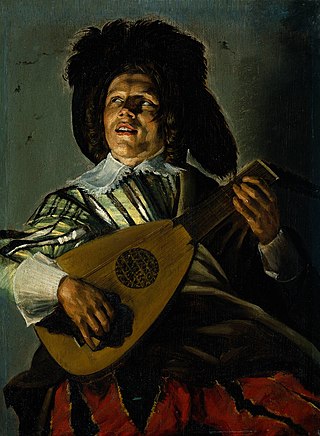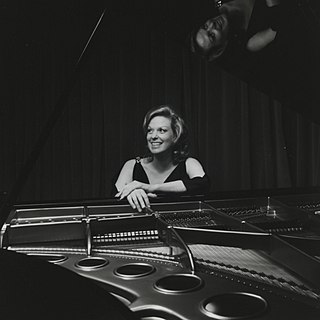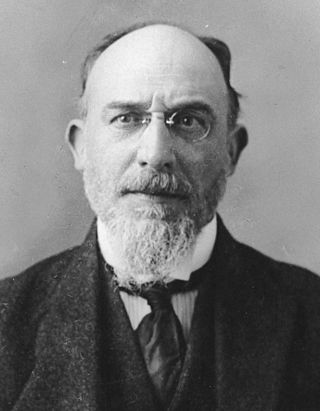This article needs additional citations for verification .(October 2007) |

A nocturne is a musical composition that is inspired by, or evocative of, the night.
This article needs additional citations for verification .(October 2007) |

A nocturne is a musical composition that is inspired by, or evocative of, the night.
The term nocturne (from French nocturne "of the night") [1] was first applied to musical pieces in the 18th century, when it indicated an ensemble piece in several movements, normally played for an evening party and then laid aside. Sometimes it carried the Italian equivalent, notturno, such as Wolfgang Amadeus Mozart's Notturno in D, K.286, written for four lightly echoing separated ensembles of paired horns with strings, and his Serenata Notturna, K. 239. At this time, the piece was not necessarily evocative of the night, but might merely be intended for performance at night, much like a serenade. The chief difference between the serenade and the notturno was the time of the evening at which they would typically be performed: the former around 9:00 pm, the latter closer to 11:00 pm. [2]
In its form as a single-movement character piece usually written for solo piano, the nocturne was cultivated primarily in the 19th century. The first nocturnes to be written under the specific title were by the Irish composer John Field, [3] generally viewed as the father of the Romantic nocturne that characteristically features a cantabile melody over an arpeggiated, even guitar-like accompaniment. However, the most famous exponent of the form was Frédéric Chopin, who wrote 21 of them. Later composers to write nocturnes for the piano include Gabriel Fauré, Alexander Scriabin, Erik Satie (1919), Francis Poulenc (1929), as well as Peter Sculthorpe. In the movement entitled 'The Night's Music' [4] ('Musiques nocturnes' in French) of Out of Doors for solo piano (1926), Béla Bartók imitated the sounds of nature. It contains quiet, eerie, blurred cluster-chords and imitations of the twittering of birds and croaking of nocturnal creatures, with lonely melodies in contrasting sections. American composer Lowell Liebermann has written eleven Nocturnes for piano, of which No.6 was arranged by the composer as Nocturne for Orchestra. Other notable nocturnes from the 20th century include those from Michael Glenn Williams, Samuel Barber and Robert Helps.
Other examples of nocturnes include the one for orchestra from Felix Mendelssohn's incidental music for A Midsummer Night's Dream (1848), the set of three for orchestra and female choir by Claude Debussy (who also wrote one for solo piano) and the first movement of the Violin Concerto No. 1 (1948) by Dmitri Shostakovich. French composer Erik Satie composed a series of five small nocturnes. These were, however, far different from those of Field and Chopin. In 1958, Benjamin Britten wrote a Nocturne for tenor, seven obbligato instruments and strings, and the third movement of his Serenade for Tenor, Horn and Strings (1943) is also titled "Nocturne".
Nocturnes are generally thought of as being tranquil, often expressive and lyrical, and sometimes rather gloomy, but in practice pieces with the name nocturne have conveyed a variety of moods: the second of Debussy's orchestral Nocturnes, "Fêtes", for example, is very lively, as are parts of Karol Szymanowski's Nocturne and Tarantella (1915) and Kaikhosru Shapurji Sorabji's Symphonic Nocturne for Piano Alone (1977–78).

Eugène-Auguste Ysaÿe was a Belgian virtuoso violinist, composer, and conductor. He was regarded as "The King of the Violin", or, as Nathan Milstein put it, the "tsar".

Toccata is a virtuoso piece of music typically for a keyboard or plucked string instrument featuring fast-moving, lightly fingered or otherwise virtuosic passages or sections, with or without imitative or fugal interludes, generally emphasizing the dexterity of the performer's fingers. Less frequently, the name is applied to works for multiple instruments.
In music, variation is a formal technique where material is repeated in an altered form. The changes may involve melody, rhythm, harmony, counterpoint, timbre, orchestration or any combination of these.

Alun Hoddinott CBE was a Welsh composer of classical music, one of the first to receive international recognition.

In music, a serenade is a musical composition or performance delivered in honour of someone or something. Serenades are typically calm, light pieces of music. The term comes from the Italian word serenata, which itself derives from the Latin serenus. Sense influenced by Italian sera "evening", from Latin sera, fem. of serus "late".

Hélène Rose Paule Grimaud is a French classical pianist and the founder of the Wolf Conservation Center in South Salem, New York.
John Andrew Howard Ogdon was an English pianist and composer.
A ballade, in classical music since the late 18th century, refers to a setting of a literary ballad, a narrative poem, in the musical tradition of the Lied, or to a one-movement instrumental piece with lyrical and dramatic narrative qualities reminiscent of such a song setting, especially a piano ballade.
Franciszek Zachara (b Tarnów, Austrian Poland (now Poland), 10 December 1898; d Tallahassee, Florida, United States, 2 February 1966) was a Polish pianist and composer who concertized extensively throughout Europe in the years leading up to 1928. He was a professor of piano at a Polish conservatory from 1922–1928, and two American colleges from around this time until his death in 1966. Zachara composed well over 150 works, including many works for piano solo, a piano concerto, a symphony, several works for band, and various chamber pieces. The archive of his manuscripts is held at the Warren D. Allen Music Library at Florida State University. Most of these manuscripts are originals (or copies) from the composer's own hand.
Valerie Tryon, is an English classical pianist. Since 1971 she has resided in Canada, but continues to pursue an international performing and recording career, and spends a part of each year in her native Britain. Among her specialisms is the music of Franz Liszt, of which she has made a number of celebrated recordings. Currently 'Artist-in-Residence' at McMaster University, Hamilton, Ontario, Tryon is active as a concerto soloist, recitalist, chamber musician, accompanist and adjudicator.

Vox Records is a budget classical record label. The name is Latin for "voice."

Carol Rosenberger is a classical pianist. In 1976, Rosenberger was chosen to represent America's women concert artists by the President's National Commission on the Observance of International Women's Year. She has given performance workshops for young musicians on campuses nationwide. Rosenberger recorded over 30 albums on the Delos Productions, Inc. recording label. Rosenberger's memoir, To Play Again: A Memoir of Musical Survival was published in 2018 by She Writes Press.
While a concerto is generally a piece for an instrument or instruments with orchestral accompaniment, some works for piano alone have been written with the seemingly contradictory designation concerto for solo piano.
Nocturnes are musical compositions inspired by, or evocative of, night.
Francesco Libetta is an Italian pianist, composer and conductor.
Musical tributes or homages from one composer to another can take many forms. Following are examples of the major types of tributes occurring in classical music. A particular work may fit into more than one of these types.

The 50 Greatest Pieces of Classical Music is a compilation of classical works recorded by the London Philharmonic Orchestra with conductor David Parry. Recorded at Abbey Road Studios, Royal Festival Hall and Henry Wood Hall in London, the compilation was released in digital formats in November, 2009 and as a 4-CD set in 2011. The 50 Greatest Pieces of Classical Music has sold over 200,000 copies and spent over three days as one of the top 10 classical albums on iTunes.

The Nocturnes are a set of five piano pieces by Erik Satie. They were written between August and November 1919. With the exception of the Premier Menuet (1920), they were his final works for solo piano, and are considered among his most significant achievements in the genre. The Nocturnes stand apart from Satie's piano music of the 1910s in their complete seriousness—lacking the zany titles, musical parody, and extramusical texts that he typically featured in his scores of the time. The completed set of five nocturnes takes about 13 minutes to perform.
The Sei pezzi per pianoforte, P 044, is a set of six solo piano pieces written by the Italian composer Ottorino Respighi between 1903 and 1905. These predominantly salonesque pieces are eclectic, drawing influence from different musical styles and composers. The pieces have various musical forms and were composed separately and later published together between 1905 and 1907 in a set under the same title for editorial reasons; Respighi had not conceived them as a suite, and therefore did not intend to have uniformity among the pieces. The set, under Bongiovanni, became his first published work. Five of the six pieces are derived from earlier works by Respighi, and only one of them, the "Canone", has an extant manuscript.